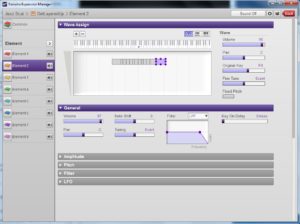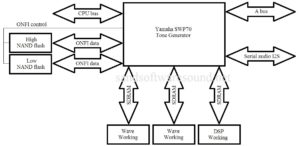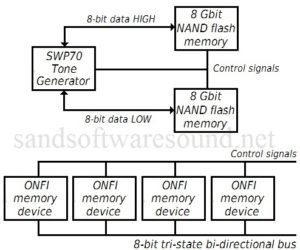New Genos effect algorithms
To my way of thinking, Genos/Tyros/PSR DSP effects consist of two parts: an effect algorithm and sets of preset parameters for the algorithm. That’s my mental model. Genos adds a number of new effect algorithms and effect presets versus Tyros 5. Here is a terse summary of the additions:
- Reverb block
- New presets with enhanced mid-range
- Chorus block
- Tempo delay, tempo echo and tempo cross delay added
- Insertion/variation blocks
- New distortion effects (not included in Montage)
- Tweed Guy: Vintage bass amp simulator
- Boutique DC: Boutique made overdrive amp simulator
- Y-Amp: Preamp & amp simulator for Guitar
- Distomp: Preamp & parametric EQ simulator for Guitar
- 80s Small Box: 80s distortion pedal simulator
- New EQ & compressor effects
- Uni Comp: Compressor using “downward” algorithm for making loud sounds quieter
- New modulation effects
- Real Rotary (Same as Montage minus horn acceleration parameters)
- New miscellaneous effects
- Damper Resonance:Simulates a damper resonance effect for grand piano (same as Montage)
- Presence: Brings out the hidden presence of the input signal
- Tyros 5 Loop Fx and Lo-Fi Drum effects moved to “Misc” category
BTW, it’s not clear if the Genos does half-pedal like the Montage. I’m thinking, “No.” Yamaha have reserved Virtual Resonance Modeling (VRM) for the Clavinova series. Genos and Montage get the DAMPER RESONANCE DSP algorithm instead.
I’ve been trying to decode the names of the guitar effect algorithms. Yamaha seem incredibly paranoid about stepping on someone’s trademark or copyright. Here’s my current guesses:
- Tweed guy: Fender Bassman (’59 vintage)
- Boutique DC: Cornell by DC Developments
- Y-Amp: Yamaha Y-Amp
- Distcomp: Yamaha stomp pedal
- 80s Small Box: MXR fuzz pedal simulator
I wonder if we’ll see these algorithms ported to the Montage in an update? Just after the Tyros 5 was released, the T5’s “Real Distortion” effect algorithms were added to the Motif XF (version 1.5).
Yamaha needs to fix this divot
I did a quick compare of Montage effects vs. Genos effects. As mentioned above, Genos adds the new rotary speaker effect algorithm first released in Montage. Here is a correspondence table:
Montage Genos MSB LSB Genos preset name
---------------- ---------------- --- --- --------------------------
ROTARY SPEAKER 1 ROTARY SPEAKER 1 99 16 Dual Rotary Speaker Bright
99 17 Dual Rotary Speaker Warm
ROTARY SPEAKER 2 REAL ROTARY 69 32
“ROTARY SPEAKER 1” is the former, go-to rotary speaker effect algorithm (WARM and BRIGHT).
At this level, all looks great. Except, the Genos Data List PDF shows 16 parameters for the REAL ROTARY algorithm while the Montage Data List shows 18 parameters. The Genos leaves out:
No. Parameter Range Value Tbl No. --- ----------------------- --------------------- ---------- ------- 17 Slow-Fast Time of Rotor x0.21 - x1.00 - x2.00 (14 - 127) 49 18 Fast-Slow Time of Rotor x0.21 - x1.00 - x2.00 (14 - 127) 49
Either the Genos cannot store more than 16 DSP parameters or it cannot display/edit more than 16 DSP parameters.
Whatever the reason, this stinks and Yamaha need to fix this divot. People need to set the (de)acceleration times for both the horn and rotor. They have sinned in the eyes of B-3 purists and must atone.
Genos Firmware V1.10
All is not bleak, however. Genos Firmware version 1.10 has been announced. Yamaha’s quick summary:
- What’s new?
- Audio Multi Recording function is available
- Search function while adding the Playlist
- Supports use with the Yamaha Expansion Manager (V2.5.0 or later)
- Supports Expansion Audio Style
- Wireless LAN status can be checked on the Time display
- Improved the performance of the instrument
- Fixed other minor problems
- Registration Memory can additionally save following parameters
- Arpeggio Velocity
- Arpeggio Gate Time
- Arpeggio Unit Multiply
- Style Retrigger Rate
- Style Retrigger On/Off
- Style Retrigger On/Off & Rate
The update adds support for Yamaha Expansion Manager (YEM) voice editing and pack installation.
The update is scheduled for release on 1 November 2017. The Genos Reference Manual and Data List were pulled pending the release of the update. The fact that a quick update was in the works might explain why the V1.0 Reference Manual and Data List were delayed. Big corporations move with leviathan speed. [No real news, there.]
Copyright © 2017 Paul J. Drongowski



